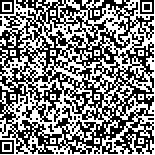下载中心
优秀审稿专家
优秀论文
相关链接
摘要

基于长城文化遗产保护与利用的内在需求和长城学理论,首先明确信息技术作用于长城文化遗产保护与利用的内涵。然后运用数字孪生理论与方法,结合新型信息技术发展趋势,探索长城文化遗产保护与利用的信息技术方法框架。该方法框架以“循证分析”与“科学推演”两部分为关键内容,涵盖长城文化遗产数据采集技术方法、模型构建技术方法、定量分析技术方法、虚拟修复技术方法、展示传承技术方法等5个方面。基于该方法框架进一步构建面向长城文化遗产保护与利用研究的技术方案,并以山西省老牛湾堡为例说明该技术方案的具体应用路径。方法框架和技术方案的提出不仅立足于解决长城文化遗产数字化表观与外形的问题,更要揭示长城文化遗产的内涵与实质,有助于从根本上实现长城文化遗产体系的有效保护与永续利用。
This paper sorts out a set of information technology framework suitable for protecting and utilizing cultural heritage, especially the Great Wall Cultural Heritage, under the background of the great development of information technology.By combing the previous literature, this paper summarizes the relevant research progress and shortcomings at home and abroad and then proposes a comprehensive and systematic method framework and technical plan. First, the Great Wall cultural heritage is selected as the research object, because it is a complex object involving multiple types and scales of cultural heritage. Moreover, on the basis of the inherent needs of the protection and utilization of the Great Wall cultural heritage and the theory of Great Wall studies, it can be clarified that the role of information technology in protecting and utilizing the Great Wall cultural heritage is to promote the dynamic balance of the protection and utilization of the Great Wall cultural heritage through the application of information technology. Then, using the digital twin theory and methods, combined with the development trend of new information technology, this paper deeply explores the information technology method framework for the protection and utilization of the Great Wall cultural heritage. The reason why the concept and technology of the digital twin are introduced is that it can make the protection and utilization of the Great Wall Cultural Heritage no longer a passive record, but can actively simulate, deduce, predict, and feedback the physical space. Finally, guided by the method framework, the Great Wall Cultural Heritage of typical sample area is selected as the research object, guided by the actual protection and utilization needs of sample areas, the application logic of technology integration in the method framework has been combed, and then the scientific research results of evidence-based analysis and scientific deduction are generated.The method framework takes evidence-based analysis and scientific deduction as the key contents, covering five aspects: data collection technology method of Great Wall Cultural Heritage, model construction technology method, quantitative analysis technology method, virtual restoration technology method, and display inheritance technology method. Meanwhile, through the analysis and deduction of the method framework, it can be concluded that future research will focus on model construction and quantitative analysis in the part of evidence-based analysis. In the part of evidence-based analysis, future research will focus on model construction and quantitative analysis. The difficulty is to break through the correlation technology between entity model and semantic information. In the part of scientific deduction, virtual restoration will be the focus of future research, and the difficulty is the processing and organization of multi-source evidence level. Furthermore, taking Laoniuwan Fort in Shanxi Province as an example, on the basis of the method framework, a technical plan for the protection and utilization of the Great Wall cultural heritage is further constructed, and the specific application path of the technical plan is explained.The proposed method framework and technical solutions are not only based on solving the digital appearance of the Great Wall cultural heritage, but also revealing the connotation and essence of the Great Wall cultural heritage, which will help fundamentally realize the effective protection of the Great Wall cultural heritage system and sustainable use.

